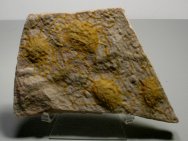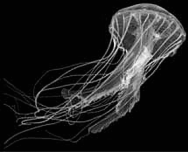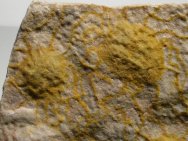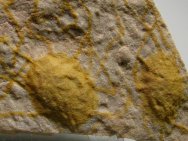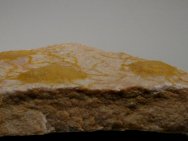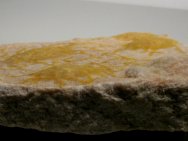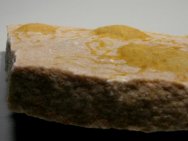Scyphozoa Tentacled Jellyfish Ichnofossil
Phylum Cnidaria, Class Scyphozoa
Geological Time: Middle Cambrian
Size: Matrix: 7.2 inches across widest diagonal
Fossil Site: Krukowski Quarry, Mount Simon Sandstone Outlier, Mosinee, Wisconsin
Code: DD430
Price: Sold
|
The plate contains four tentacled jellyfish, which are rare in the quarry. This particular specimen is from a new layer with the first such tentacle jellyfish to be recovered in three years. The relief that is seen is likely due to the jellyfish pumping sand rather than water in an attempt to escape from the beach back to the water. It comes from a particular horizon in the Mount Simon Sandstone formation that also yields fascinating Diplichnites, huge Jellyfish (Medusae) and Climactichnites. Jellyfish body fossils are incredibly subtle, and therefore this specimen has been subtly stained. Being
comprised entirely of soft tissue (living jellyfish are about 95
Phylum Cnidaria (anemones, corals, jellyfish and sea pens) are among the most ancient animals and has one of the longest fossil histories of metazoans. Though simple in body form, they remain ubiquitous and widespread in modern marine environments. The earliest forms in the fossil record appear in Ediacarian fauna of Southern Australia, which dates to the Precambrian some 600 million years ago. Their persistence is clear testament that old and simple animals can be enormously successful, and that the clique' "climbing the evolutionary ladder" is a misnomer; rather, life either adapts to the current and changing environment, or perishes. Reference: Hagadorn, JW., Dott, RH., Damrow, D, Stranded on a Late Cambrian shoreline: Medusae from central Wisconsin, Geology (39) No. 2. |
